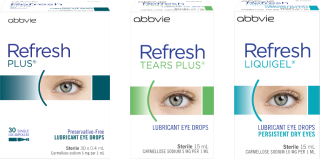About Dry Eye
Causes and management
What is Dry Eye?
If you’ve ever felt like there’s sand in your eyes or noticed persistent redness and irritation, you might be experiencing what we call "Dry Eye". Dry Eye is a common condition where your eyes don’t produce enough tears or the right quality of tears to keep your eyes comfortably lubricated. This can lead to discomfort and even affect your vision. But don't worry, you’re not alone, and we’re here to help you understand and manage it!
Causes of Dry Eye
Dry Eye happens when your eyes don't make enough tears or when the tears don't have enough oils to keep them from evaporating too quickly. Dry Eye symptoms can be caused by a variety of factors and understanding them can be the first step towards finding relief. Here are some common causes:
Wearing contact lenses: Read more about managing Dry Eye symptoms for people who wear contact lenses.
Managing Dry Eye
Managing Dry Eye effectively involves a combination of lifestyle changes, eye care routines, and sometimes medical treatments. Try to be mindful of the situations that lead to Dry Eye symptoms and try to manage them. Here are a few options to help you find relief from mild to moderate symptoms:
- Eye drops: Over-the-counter artificial tears can be a simple yet effective way to keep your eyes moist. Did you know that if you often have Dry Eye symptoms, you can use eye drops even when your eyes feel fine to keep them well lubricated. Choose preservative-free options, like REFRESH® PLUS if you have extra-sensitive eyes.
- Blink more often: Especially during long hours in front of screens, remind yourself to take breaks and blink regularly to refresh your eyes. Blink twice if you’re ok!
- Humidify your environment: Using a humidifier can add moisture to the air, helping to keep your eyes from drying out.
- Stay hydrated: Drinking plenty of water throughout the day helps maintain overall body hydration, including your eyes.
- Wear sunglasses: Protect your eyes from wind and sun exposure with wraparound sunglasses.
- Position your computer screen below eye level: By positioning your computer screen below eye level, you won’t need to open your eyes as wide to view it.
If your symptoms persist, it’s a good idea to consult a healthcare professional. They can recommend treatments like prescription eye drops or other therapies. Read more about when to consult a doctor about Dry Eye.
Remember, taking small steps can make a big difference in how your eyes feel. Our range of eye drops may help you to find relief from Dry Eye.
- Findlay Q and Reid K. Aust Prescr 2018;41:160–3.
ALWAYS READ THE LABEL. FOLLOW THE DIRECTIONS FOR USE. IF SYMPTOMS PERSIST, TALK TO YOUR HEALTHCARE PROFESSIONAL.
AU-RFP-240056. November 2024.

